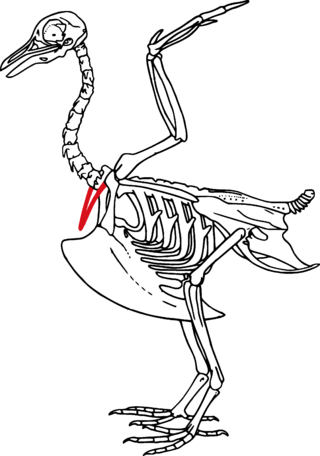
The furcula or wishbone is a forked bone found in most birds and some species of non-avian dinosaurs, and is formed by the fusion of the two clavicles. In birds, its primary function is in the strengthening of the thoracic skeleton to withstand the rigors of flight.
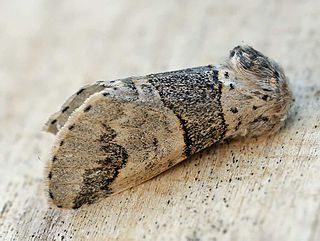
The poplar kitten is a species of moth in the family Notodontidae. The species was first described by Nikolaus Joseph Brahm in 1787. They are found throughout Europe and in North Africa, Mongolia, Kazakhstan and Xinjiang.

The Entognatha are a class of wingless and ametabolous arthropods, which, together with the insects, makes up the subphylum Hexapoda. Their mouthparts are entognathous, meaning that they are retracted within the head, unlike the insects. Entognatha are apterous, meaning that they lack wings. The class contains three orders: Collembola, Diplura and Protura. These three groups were historically united with the now-obsolete order Thysanura to form the class Apterygota, but it has since been recognized that the hexapodous condition of these animals has evolved independently from that of insects, and independently within each order. The orders might not be closely related, and Entognatha is now considered to be a paraphyletic group.

The furcula, or furca is a forked, tail-like appendage. It is present in most species of springtails, and in them it is attached ventrally to the fourth abdominal segment. The organ most often is present in species of Collembola that lives in the upper soil layers where it is used for jumping to avoid predators. While at rest, it is retracted under the abdomen and held there by a structure variously called the retinaculum or hamula, which in turn is located beneath the third abdominal segment. When the furcula escapes from retinaculum, it swings downwards and hits the substrate, propelling the springtail into the air. The animal does not use this mechanism for ordinary locomotion, but only for escaping from predators or severe stress.

Furcula furcula, the sallow kitten, is a moth from the family Notodontidae. It was first described by the Swedish entomologist Carl Alexander Clerck in 1759 from a specimen found in Sweden.
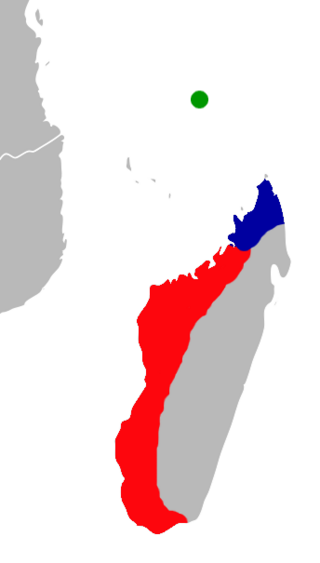
Grandidier's trident bat is a species of bat in the family Hipposideridae endemic to Madagascar. It was formerly assigned to the genus Triaenops, but is now placed in the separate genus Paratriaenops.

Paratriaenops furcula, also known as Trouessart's trident bat, is a species of bat in the family Hipposideridae. It is endemic to Madagascar. It was formerly assigned to the genus Triaenops, but is now placed in the separate genus Paratriaenops. A related species, Paratriaenops pauliani, occurs in the Seychelles.
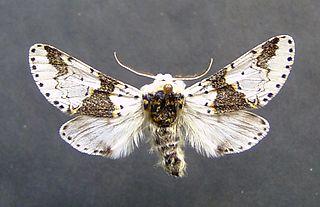
Furcula bicuspis, the alder kitten, is a moth of the family Notodontidae. The species was first described by Moritz Balthasar Borkhausen in 1790. It is found in most of the Palearctic realm.

Furcula borealis, the white furcula moth, is a moth of the family Notodontidae. It is found from New Hampshire to Texas and Florida, as well as in Colorado and South Dakota.

Furcula occidentalis, the western furcula moth, double-lined furcula or willow kitten , is a moth of the family Notodontidae. It is found from southern Yukon and British Columbia to Nova Scotia, south to Maryland and west to Utah and Oregon.

Furcula cinerea, the gray furcula moth, is a species of moth in the family Notodontidae. It was first described by Francis Walker in 1865. It is found in the United States, southern Canada and the Northwest Territories.

Marpesia furcula, the sunset daggerwing or glossy daggerwing, is a species of butterfly of the family Nymphalidae. It is found in Central and South America, from Nicaragua to Bolivia and Argentina. The habitat consists of evergreen rainforests at altitudes up to 1,400 meters.

Paratriaenops is a genus in the bat family Hipposideridae. It is classified in the tribe Triaenopini, along with the closely related genus Triaenops and perhaps the poorly known Cloeotis. The species of Paratriaenops were placed in Triaenops until 2009. Paratriaenops currently contains the following species:

Spilostethus is a genus of bugs in the family Lygaeidae. Most species in this genus are from the Palearctic and Oriental regions.
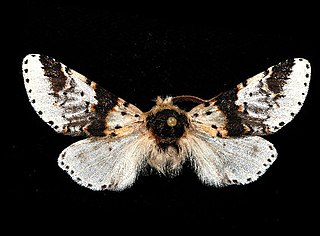
Furcula scolopendrina, the zigzag furcula moth or poplar kitten moth, is a species of prominent moth in the family Notodontidae. It was described by Jean Baptiste Boisduval in 1869 and is found in North America.
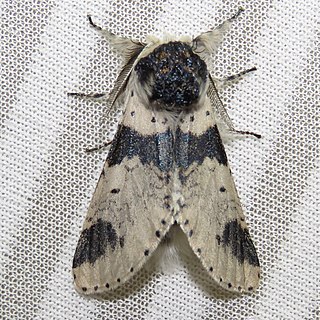
Furcula modesta, the modest furcula or modest kitten, is a species of moth in the family Notodontidae. It was first described by Hudson in 1891 and it is found in North America.
Furcula nivea is a moth in the family Notodontidae. It was first described by Berthold Neumoegen in 1891 and it is found in North America.

Spilostethus hospes, the darth maul bug, is a species of seed bug in the family Lygaeidae. It is found in Asia, Australasia, and Oceania. Its common name is a reference to the Star Wars character Darth Maul, who shares similar markings.
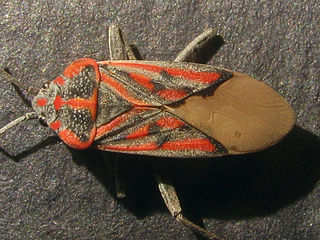
Spilostethus crudelis is a species of seed bug in the family Lygaeidae, found in southern Africa.
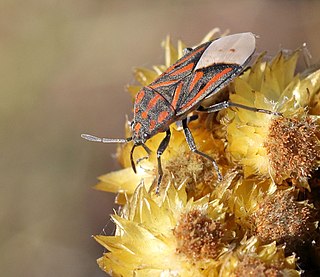
Spilostethus trilineatus is a species of seed bug in the family Lygaeidae, found in Africa and India.

















